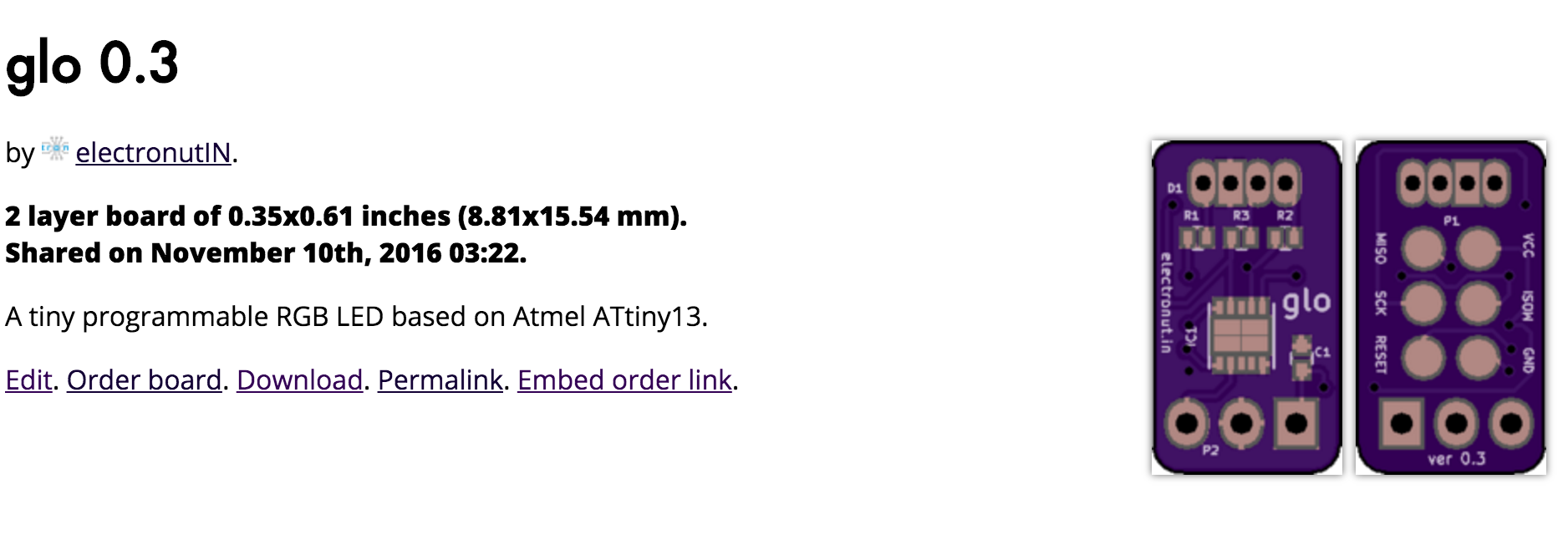I have uploaded glo 0.3 gerbers to OSHPark:

https://oshpark.com/shared_projects/Eu1TpIlK
Here's a video of glo in action:
For the curious, the red PCB is snapVCC, a buck converter regulator I crowd-funded successfully last year:
A tiny programmable RGB LED based on Atmel ATtiny13.
cool project, but what is the PCB on the 9 volt for?